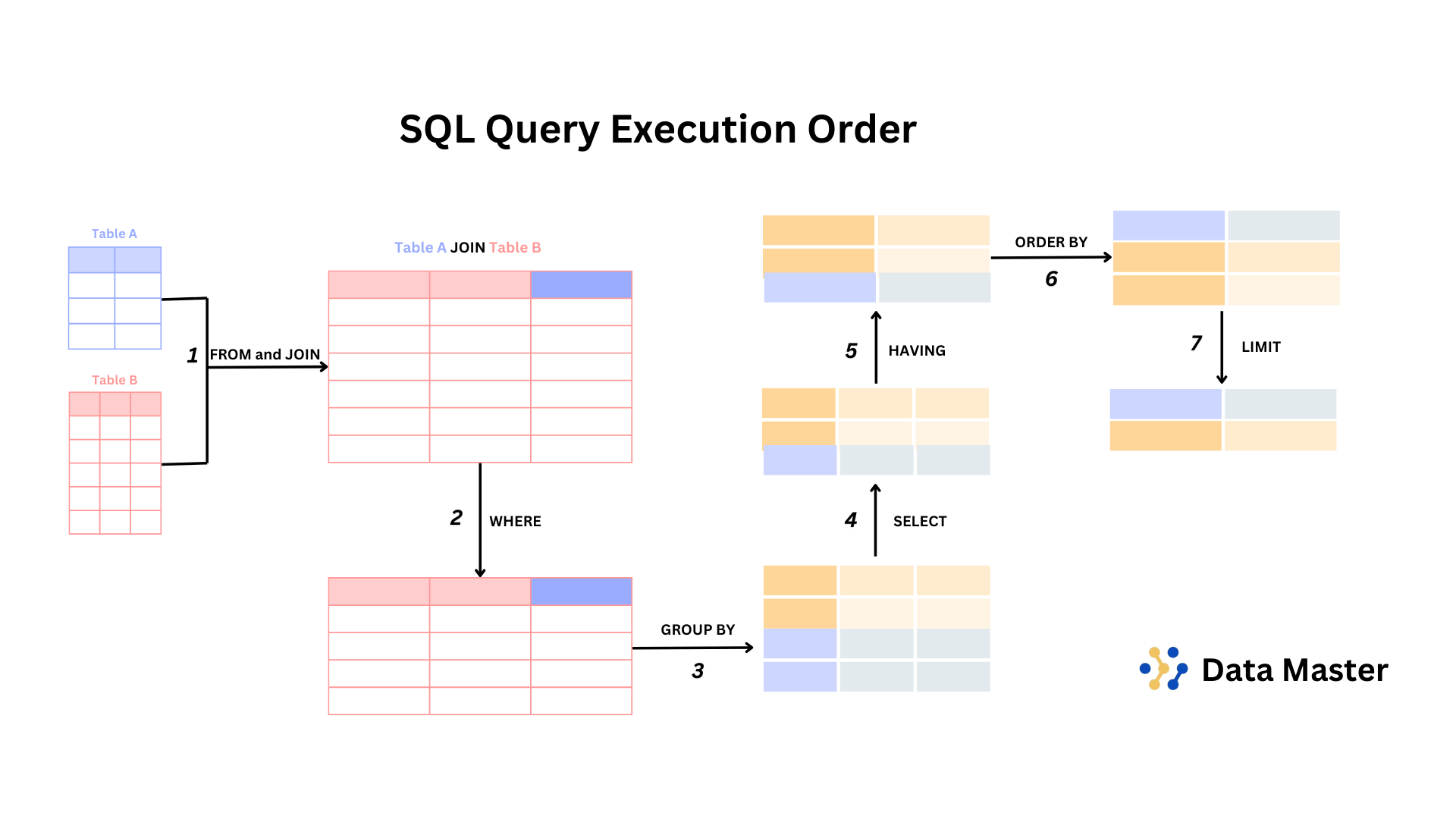Crafting effective SQL queries is a vital skill for data professionals. Whether you’re retrieving data, updating records, or performing complex analytics, well-structured SQL queries can significantly improve performance, accuracy, and readability. This blog explores the best practices and techniques for writing efficient and maintainable SQL queries. For additional insights on structuring queries, consider our guide on Mastering SQL Joins.
Why Writing Effective SQL Queries Matters
- Improved Performance: Efficient queries reduce execution time and optimize resource usage, which is critical when working with large datasets.
- Maintainability: Clean and well-organized SQL code is easier to read, debug, and update.
- Accurate Results: Proper query structure minimizes errors and ensures data integrity. Learn more about achieving accuracy in our post on Fact Tables Explained.
Best Practices for Writing Effective SQL Queries
1. Use Clear and Consistent Formatting
Formatting your queries consistently improves readability and maintainability. Follow these guidelines:
- Indentation: Use consistent indentation for better visual clarity.
- Capitalization: Write SQL keywords (e.g.,
SELECT,WHERE,JOIN) in uppercase. - Line Breaks: Place each column, clause, or condition on a new line for complex queries.
Example:
SELECT Customer_ID, First_Name, Last_Name
FROM Customers
WHERE Country = 'USA'
AND Status = 'Active';
For more on how formatting impacts query performance, check out SQL Query Optimization Techniques.
2. Retrieve Only the Data You Need
Avoid using SELECT * unless absolutely necessary. Fetching unnecessary columns increases data transfer time and impacts performance.
Example:
-- Less Effective:
SELECT * FROM Orders;
-- More Effective:
SELECT Order_ID, Order_Date, Total_Amount
FROM Orders;
This practice aligns with the principles of efficient data retrieval, which we explore further in Introduction to Dimensional Modeling.
3. Leverage Indexing for Faster Queries
Indexes significantly enhance query performance by reducing the amount of data the database needs to scan. Use indexed columns in WHERE, JOIN, and ORDER BY clauses.
Note: Ensure proper indexing to avoid overhead during data insertion or updates.
Deepen your understanding of indexing in Date Dimension Optimization.
4. Filter Data Early
Apply filters in the WHERE clause to limit the dataset as early as possible. This reduces processing time and improves efficiency.
Example:
SELECT Product_Name, Category
FROM Products
WHERE Stock_Quantity > 0;
5. Optimize Joins
Choose the appropriate join type (INNER JOIN, LEFT JOIN, etc.) and ensure your ON conditions are specific to avoid unintended Cartesian products. This ensures efficient data combination, as detailed in our Mastering SQL Joins guide.
Example:
SELECT Customers.First_Name, Orders.Order_Date
FROM Customers
INNER JOIN Orders
ON Customers.Customer_ID = Orders.Customer_ID;
6. Use Aliases for Clarity
Shorten table and column references using aliases, especially in complex queries with multiple joins or subqueries.
Example:
SELECT c.First_Name, o.Order_Date
FROM Customers AS c
INNER JOIN Orders AS o
ON c.Customer_ID = o.Customer_ID;
7. Avoid Repetition with Subqueries or Common Table Expressions (CTEs)
Subqueries and CTEs simplify complex logic and reduce redundancy in your queries. For practical applications, refer to Drilling Down vs. Drilling Up in Data Warehousing.
Example Using CTE:
WITH Active_Customers AS (
SELECT Customer_ID, First_Name
FROM Customers
WHERE Status = 'Active'
)
SELECT ac.First_Name, o.Order_Date
FROM Active_Customers AS ac
INNER JOIN Orders AS o
ON ac.Customer_ID = o.Customer_ID;
8. Aggregate Data Effectively
Use aggregation functions (SUM, AVG, COUNT, etc.) with appropriate grouping to summarize data efficiently.
Example:
SELECT Category, SUM(Total_Sales) AS Total_Sales
FROM Products
GROUP BY Category
ORDER BY Total_Sales DESC;
9. Monitor Query Performance
Analyze query execution plans to identify bottlenecks and optimize performance. Use tools like EXPLAIN or database-specific performance analyzers. Learn more about query monitoring in 10 Essential SQL Queries Every Data Analyst Should Know.
Example:
EXPLAIN SELECT * FROM Orders WHERE Order_Date > '2024-01-01';
10. Test Queries with Sample Data
Validate your queries on small datasets before running them on production databases to avoid performance hits or unintended data changes.
Common Pitfalls to Avoid
- Overcomplicating Queries: Keep queries as simple as possible without compromising functionality.
- Ignoring Null Handling: Be cautious with
NULLvalues and use functions likeCOALESCEorISNULLwhere necessary. - Failing to Document: Add comments to explain complex logic or business rules.
Example of Adding Comments:
-- Retrieve active customers with their recent orders
SELECT c.First_Name, o.Order_Date
FROM Customers AS c
INNER JOIN Orders AS o
ON c.Customer_ID = o.Customer_ID
WHERE c.Status = 'Active';
For additional guidance, see Understanding Dimension Tables.
Practice Exercises
- Retrieve Top-Selling Products:
SELECT Product_Name, SUM(Quantity_Sold) AS Total_Sold
FROM Sales
GROUP BY Product_Name
ORDER BY Total_Sold DESC
LIMIT 10;
- Identify Customers Without Orders:
SELECT c.First_Name, c.Last_Name
FROM Customers AS c
LEFT JOIN Orders AS o
ON c.Customer_ID = o.Customer_ID
WHERE o.Order_ID IS NULL;
- Analyze Monthly Sales Trends:
SELECT MONTH(Order_Date) AS Order_Month, SUM(Total_Amount) AS Monthly_Sales
FROM Orders
GROUP BY MONTH(Order_Date)
ORDER BY Order_Month;
Conclusion
Writing effective SQL queries is a combination of clear structure, optimized logic, and careful testing. By following these best practices, you can improve query performance and ensure accurate results. Keep experimenting with real-world scenarios to hone your expertise further.
Discover more from Data Master
Subscribe to get the latest posts sent to your email.

